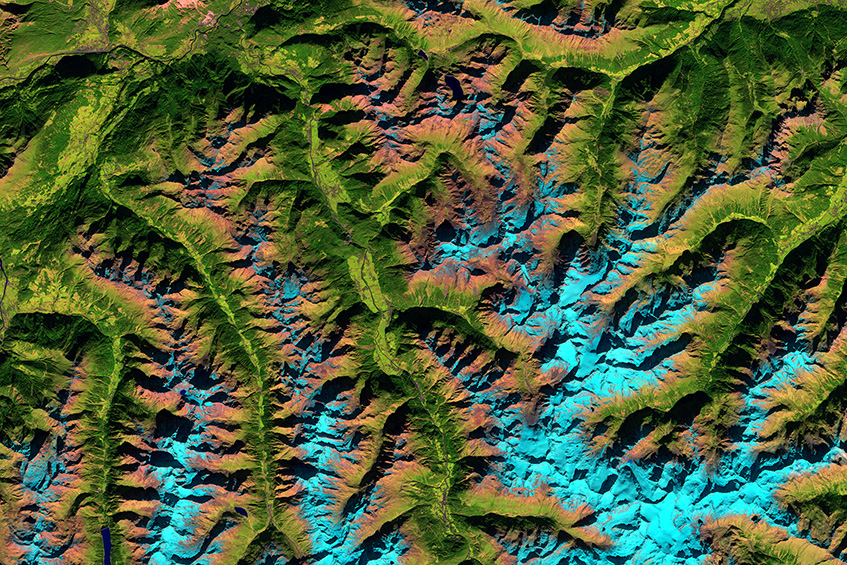Cosmos
Our aim is to understand the origin and evolution of stars, galaxies, and planets like Earth. The search for our cosmic ancestry is key to understand Earth as a member of a planetary system orbiting a star, orbiting a galaxy, interacting with the interplanetary and interstellar medium, exposed to cosmic events potentially affecting life on the planet.
For this purpose, we use and technically contribute to large telescopes of the European Southern Observatory (ESO) and high-performance ESA and NASA satellites, as well as UniBRITE, Austria’s first own satellite.
The research within Cosmos often requires the interdisciplinary combination of several branches of science. Together, observation, theory, numerical simulations, data visualization, and instrumentation form the basis for fundamental insights into key processes in the universe, including the origin of our planet, its relation to the solar system and the Milky Way, and conditions for life.
Earth
The study of Earth requires an integrated approach to the interior and exterior of the solid planet and its atmosphere. In an Earth systems perspective, there is a deep and direct connection between many branches of science traditionally seen as independent domains. The global evolution of mountains through the process and products of orogeny and continental collision has a direct impact on atmospheric composition and in turn the greenhouse effect over climatic and geological timescales.
The evolution of life on the planet's surface was responsible for the gradual introduction of oxygen to the atmosphere on which we depend as a species, and the study of palaeontogy and paleoecology provides critical insights into surface environments. Our understanding of the complex dynamics of air masses and their linkage with oceanic circulation allows modelling of the present day as well as "deep time" climate. Many igneous rocks are initiated deep in the mantle, and evolve through fractional crystallisation as they make their way up through the crust, to be extruded from volcanoes at the Earth's surface. Geochemical analyses of rocks at the surface therefore permit insights into processes at work deep in our planet.
The study of Earth also requires that we look upward as well as downward. The planet was bombarded by meteorites early in its history, and still receives them from time to time. Thus, studying the Earth is fundamentally bound to the Cosmos, and provides the foundations on which the Anthroposphere could evolve and flourish.
Anthroposphere
Research in the field of Anthroposphere aims to understand how human activity is arranged in space and time, shapes our planet’s environment, and is at the same time affected by it. It focuses particularly on urbanization dynamics, as urban areas are nodal points of transformations processes. Research activities address issues such as migration and integration, urban disparities and gentrification, as well as cities as risk areas and as centers for new development pathways like, e.g., green economy.We seek to understand socio-spatial dimensions of rapid social, economic, demographic, technological and ecological changes – such as population dynamics, migration flows or the economic restructuring, and assess their socioeconomic and ecological implications.
Empirical grounded and theory driven research on socio-spatial processes, problems and conflicts are conducted. An emphasis is placed on the transfer into geography and economic education in schools. The overarching goal is to contribute to the scientific foundation for reflexive societal engagement with complex socio-spatial processes and informed planning decisions for sustainability transitions.




